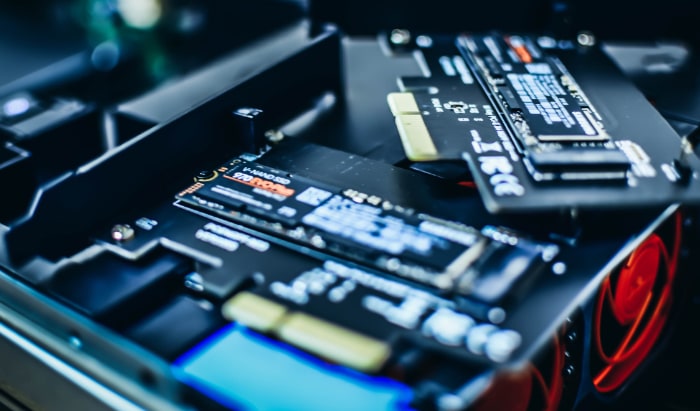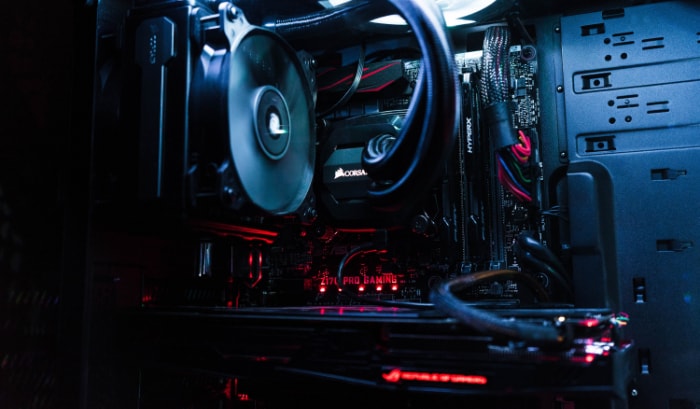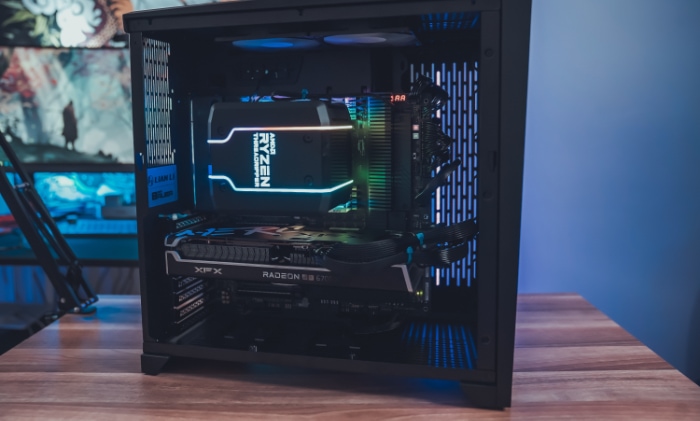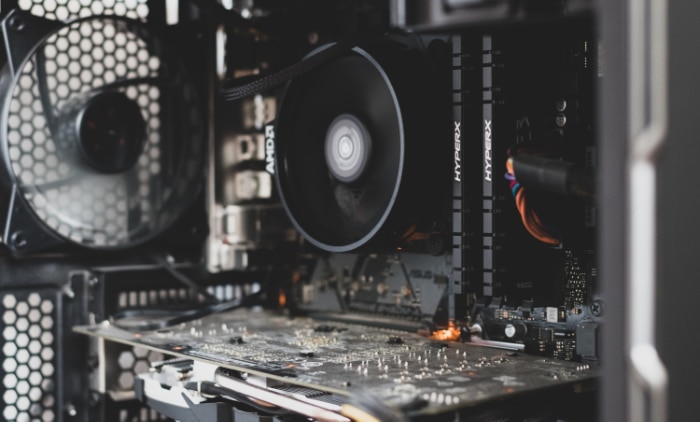How Many SSDs Can You Have? Exploring the Limits

Solid State Drives (SSDs) have become a staple in modern computing, offering unparalleled speed and performance compared to their traditional Hard Disk Drive (HDD) counterparts.
As SSDs continue to gain popularity, many users find themselves wondering about the limits of these impressive storage devices.
Specifically, how many SSDs can one have in a single computer system? In this blog post, we will delve into the world of SSDs, exploring the factors that determine the number of SSDs you can have, the advantages of using multiple SSDs, and how to best configure them for various use cases.
Whether you are a casual user, a professional content creator, or a power user, this guide will help you better understand the potential of SSDs and how to harness their capabilities to optimize your computing experience.
Understanding SSDs
Solid State Drives (SSDs) have revolutionized the way we store and access data, offering significant advantages over traditional Hard Disk Drives (HDDs).
To better comprehend how multiple SSDs can be utilized in a computer system, it’s essential first to understand what SSDs are, how they function, and the different types available.
What Are SSDs?
SSDs are a type of non-volatile storage device that uses NAND-based flash memory to store and access data.
Unlike HDDs, which rely on spinning magnetic disks and a moving read/write head, SSDs have no moving parts, resulting in faster data access, reduced power consumption, and increased durability.
These advantages have made SSDs the preferred choice for a wide range of applications, from consumer electronics to enterprise storage solutions.
Comparison to Traditional HDDs
In comparison to HDDs, SSDs offer several distinct benefits:
- Faster read/write speeds: SSDs can access and transfer data much more quickly than HDDs.
- Improved durability: With no moving parts, SSDs are less susceptible to physical damage and wear.
- Reduced power consumption: SSDs consume less power than HDDs, leading to longer battery life in portable devices and lower energy costs in data centers.
- Quieter operation: Since SSDs have no moving parts, they operate silently, unlike the audible noise produced by HDDs.
Types of SSDs
There are several types of SSDs available on the market, each with its own unique features and benefits. Understanding these different types can help you make informed decisions when considering how many SSDs to incorporate into your system.
SATA SSDs
Serial ATA (SATA) SSDs are the most common type of SSD, designed to replace traditional HDDs in desktops and laptops. They use the same SATA interface as HDDs, making them compatible with most systems.
While they offer significant performance improvements over HDDs, they are generally slower than other types of SSDs due to the limitations of the SATA interface.
PCIe NVMe SSDs
PCI Express (PCIe) Non-Volatile Memory Express (NVMe) SSDs are a newer and faster type of SSD that connects directly to the motherboard via a PCIe slot.
NVMe SSDs offer much higher read/write speeds than SATA SSDs, making them ideal for high-performance tasks such as gaming, video editing, and data-intensive applications.
M.2 SSDs
M.2 SSDs are a compact form factor that can utilize either the SATA or PCIe NVMe interface, depending on the specific model. They are designed for use in slim laptops, ultrabooks, and small form factor (SFF) desktops.
M.2 SSDs connect directly to the motherboard through dedicated M.2 slots, which are increasingly common on modern motherboards.
U.2 SSDs
U.2 SSDs are another type of NVMe-based SSD, designed primarily for enterprise and data center environments. They use a U.2 connector, which is similar in appearance to a SATA connector but provides the high-speed benefits of the PCIe NVMe interface.
U.2 SSDs are less common in consumer systems but offer robust performance and reliability for demanding applications.
Understanding the different types of SSDs and their specific advantages is crucial when deciding how many SSDs to incorporate into your computer system.
In the next sections, we will explore the factors determining the number of SSDs you can have and how to configure them for optimal performance.
Factors Determining the Number of SSDs You Can Have

The number of SSDs you can incorporate into your computer system depends on various factors, ranging from your motherboard’s capabilities to your budget.
By understanding these factors, you can make informed decisions about how many SSDs to include in your setup.
Motherboard Limitations
Available SATA Ports
For SATA SSDs, the number of available SATA ports on your motherboard will directly influence how many drives you can connect.
Most motherboards come with at least four SATA ports, allowing for multiple SATA SSDs and other SATA devices such as HDDs and optical drives. However, some high-end motherboards may offer up to eight or more SATA ports for increased storage options.
M.2 Slots
For M.2 SSDs, whether SATA or PCIe NVMe, you’ll need to consider the number of M.2 slots on your motherboard.
While some entry-level motherboards may not include any M.2 slots, most modern motherboards offer at least one or two. High-end motherboards designed for enthusiasts may feature three or more M.2 slots, allowing for greater storage flexibility.
PCIe Lanes and Slots
For PCIe NVMe SSDs, including M.2 and U.2 variants, you need to consider the number of available PCIe lanes and slots on your motherboard. Each PCIe device, such as graphics cards and SSDs, requires a certain number of PCIe lanes to function.
Most CPUs and chipsets have a limited number of PCIe lanes, so it’s crucial to ensure that you have enough available lanes for all your devices, including SSDs.
Power Supply Capacity
Adding more SSDs to your system will increase its overall power consumption. While SSDs are generally more power-efficient than HDDs, it’s essential to ensure that your power supply can handle the additional load.
Check the power supply’s wattage rating and the power requirements of your other components to determine if you have sufficient headroom for additional SSDs.
System Cooling and Airflow
As SSDs generate heat during operation, proper cooling and airflow become increasingly important when adding multiple drives to your system. Although SSDs produce less heat than HDDs, having multiple SSDs in close proximity can still lead to increased temperatures.
Ensure that your computer case has adequate cooling and airflow to maintain optimal SSD performance and longevity.
Physical Space in the Computer Case
The amount of physical space available in your computer case will also influence how many SSDs you can install. Most standard cases have multiple 2.5-inch and 3.5-inch drive bays, which can accommodate SATA SSDs.
However, compact cases and small form factor builds may have limited space for drives, necessitating the use of M.2 SSDs or fewer SATA SSDs.
Budget Considerations
Lastly, your budget will play a significant role in determining how many SSDs you can incorporate into your system. SSDs, particularly high-capacity and high-performance models, can be relatively expensive.
Balancing your storage needs with your budget is crucial when deciding on the number and type of SSDs to include in your computer.
By considering these factors, you can determine the optimal number of SSDs for your specific use case and system constraints. In the next sections, we will explore various SSD configurations and the benefits of having multiple SSDs in your system.
Configuring Multiple SSDs
When incorporating multiple SSDs into your computer system, there are several configurations to consider. These configurations can offer different benefits, such as increased performance, data redundancy, or dedicated storage for specific tasks.
Understanding these configurations and their advantages can help you optimize your system for your unique needs.
Raid Configurations
RAID (Redundant Array of Independent Disks) is a storage technology that combines multiple SSDs (or HDDs) to create a single, larger storage volume with various performance and redundancy benefits. There are several common RAID configurations:
RAID 0 (Striping)
RAID 0 splits data evenly across two or more SSDs, effectively doubling the read and write speeds of a single SSD. However, RAID 0 offers no data redundancy, and the failure of one drive results in the loss of all data across the entire array.
RAID 1 (Mirroring)
RAID 1 duplicates data across two or more SSDs, ensuring that each drive contains an identical copy of the data. This configuration provides data redundancy, as the failure of one drive does not result in data loss.
However, RAID 1 offers no performance benefits and requires twice the storage capacity compared to a single drive.
RAID 5 (Striping with Parity)
RAID 5 is a more advanced configuration that combines the performance benefits of RAID 0 with the redundancy of RAID 1. Data is striped across three or more SSDs, with additional parity information stored to enable data recovery in case of a single drive failure.
RAID 5 requires at least three SSDs and offers a balance of performance and data protection.
RAID 10 (Striping and Mirroring)
RAID 10, also known as RAID 1+0, combines the benefits of RAID 0 and RAID 1 by striping data across mirrored pairs of SSDs. This configuration requires at least four SSDs and offers both performance improvements and data redundancy.
However, RAID 10 requires double the storage capacity, as half of the total capacity is used for mirroring.
Pros and Cons of Different RAID Configurations

Each RAID configuration offers unique advantages and drawbacks, depending on your specific needs. When considering a RAID setup, take into account factors such as performance requirements, data redundancy, storage capacity, and overall cost.
Using Multiple SSDs for Separate Tasks
Another approach to configuring multiple SSDs is to dedicate each drive to a specific task or purpose. This can help optimize system performance by spreading the workload across multiple drives. Some common use cases include:
Dedicated Boot Drive
Using a separate SSD as a boot drive ensures faster system startup and more responsive performance for your operating system and critical applications.
This can be particularly useful for systems that require frequent restarts or need to maintain optimal performance during high-demand tasks.
Storage Drive
Having a dedicated storage drive allows you to keep your data organized and separated from your operating system and applications. This can make it easier to manage large files, such as media libraries or project files, and streamline backups and data transfers.
Scratch Disk for Content Creation
Content creators, such as video editors and graphic designers, can benefit from having a dedicated SSD as a scratch disk.
A scratch disk is used to store temporary files and cache data during resource-intensive tasks, such as video rendering or image processing. By using a separate SSD for this purpose, you can significantly improve the performance of your content creation software.
By exploring various configurations for multiple SSDs, you can optimize your computer system’s performance, storage capacity, and data redundancy.
In the next sections, we will discuss the benefits of having multiple SSDs and provide real-world scenarios to help you determine the optimal number of SSDs for your specific needs.
Benefits of Having Multiple SSDs
Incorporating multiple SSDs into your computer system can offer numerous advantages, depending on your specific needs and the configuration you choose.
In this section, we will explore the key benefits of using multiple SSDs, ranging from enhanced system performance to improved data management.
Enhanced System Performance
One of the most significant benefits of using multiple SSDs is the potential for improved system performance.
By distributing tasks and data across multiple drives, you can reduce the workload on each individual SSD, resulting in faster read and write speeds, more responsive application performance, and quicker boot times.
This can be particularly beneficial for users who require high-performance storage for tasks such as gaming, video editing, or data-intensive applications.
Increased Storage Capacity
Adding multiple SSDs to your system can also help you expand your overall storage capacity. With the ever-growing file sizes of modern applications, media, and data, having ample storage space is essential for many users.
By combining multiple SSDs, either through RAID configurations or by dedicating each drive to specific tasks, you can create a storage solution tailored to your needs.
Data Redundancy and Backup
In certain RAID configurations, such as RAID 1, RAID 5, or RAID 10, multiple SSDs can provide data redundancy and protection against drive failure.
By duplicating or distributing data across multiple drives, these configurations ensure that your valuable data remains safe even if one drive fails.
This can be especially important for businesses or users who rely on their data for critical tasks and cannot afford to lose it due to hardware failure.
Faster Read/Write Speeds
In some RAID configurations (RAID 0, RAID 5, or RAID 10), multiple SSDs can work together to provide faster read and write speeds than a single SSD.
This can lead to quicker file transfers, reduced application loading times, and more efficient data processing. For users who require the highest levels of storage performance, these configurations can offer significant advantages.
Efficient Multitasking and Workflow
Using multiple SSDs for separate tasks, such as dedicating one drive as a boot drive, another as a storage drive, and a third as a scratch disk, can help optimize your workflow and improve multitasking.
By separating different types of data and tasks across multiple drives, you can reduce the strain on each individual SSD and ensure that your system remains responsive and efficient during demanding workloads.
In summary, having multiple SSDs in your computer system can offer a range of benefits, including enhanced performance, increased storage capacity, data redundancy, faster read/write speeds, and improved multitasking.
By understanding these advantages and considering your unique needs, you can determine the optimal number of SSDs and configurations for your system.
In the next section, we will explore real-world scenarios to help you decide how many SSDs are best for your specific use case.
Real-World Scenarios: How Many SSDs Do You Really Need?
Determining the optimal number of SSDs for your computer system depends on your unique requirements and use cases.
In this section, we will explore several real-world scenarios, highlighting the factors to consider when deciding how many SSDs to incorporate into your system.
Casual Home User
For casual home users who primarily use their computer for tasks such as web browsing, email, and streaming media, a single SSD may be sufficient. In this case, the primary consideration should be the storage capacity required for your files and applications.
A single, larger-capacity SSD can provide enough storage space, while still offering the benefits of faster boot times and improved system responsiveness.
Gamer
Gamers can benefit from having multiple SSDs in their system, particularly if they have a large library of games or require fast load times for a competitive edge. In this scenario, a two-SSD setup might be ideal:
Boot drive: A smaller-capacity SSD dedicated to the operating system and essential applications, ensuring quick boot times and smooth system performance.
Gaming drive: A larger-capacity SSD dedicated to storing games, providing faster load times and improved in-game performance.
Content Creator
Content creators, such as video editors, graphic designers, and photographers, often have demanding storage requirements in terms of both capacity and performance. In this scenario, a three-SSD setup might be optimal:
- Boot drive: A smaller-capacity SSD for the operating system and essential applications, ensuring quick boot times and smooth system performance.
- Storage drive: A larger-capacity SSD for storing project files, raw footage, and other large files, providing fast access and efficient file management.
- Scratch disk: A high-performance SSD dedicated to temporary files and cache data, improving the performance of content creation software during resource-intensive tasks.
Business User or Data Professional

Business users and data professionals who work with large datasets, databases, or virtual machines may require multiple SSDs for optimal performance and data protection.
In this scenario, a RAID configuration, such as RAID 5 or RAID 10, could be ideal, providing a balance of performance, storage capacity, and data redundancy.
Server or Data Center Environment
In server or data center environments, the number of SSDs required will depend on the specific applications and workloads being run.
Factors to consider include performance requirements, storage capacity, data redundancy, and budget. RAID configurations such as RAID 5, RAID 6, or RAID 10 are often used in these settings to provide a balance of performance and data protection.
In conclusion, the number of SSDs you need will depend on your specific use case and requirements. By considering factors such as performance, storage capacity, data redundancy, and budget, you can determine the optimal SSD configuration for your system.
Whether you are a casual home user, a gamer, a content creator, or a data professional, understanding your unique needs will help you make informed decisions about how many SSDs to incorporate into your computer system.
Conclusion
Ultimately, the number of SSDs you need for your computer system will depend on your unique requirements, use case, and budget.
By understanding the various factors that influence how many SSDs you can incorporate, such as motherboard limitations, power supply capacity, system cooling, and physical space, you can make informed decisions about your storage setup.
Multiple SSD configurations offer a range of benefits, including enhanced performance, increased storage capacity, data redundancy, and optimized workflows.
From casual home users to gamers, content creators, and data professionals, each user can tailor their SSD configuration to their specific needs.
Remember to consider RAID configurations, dedicated SSDs for separate tasks, and your individual storage requirements when determining the optimal number of SSDs for your system.
By doing so, you can ensure that your computer system offers the performance, reliability, and storage capacity you need for your unique use case.



